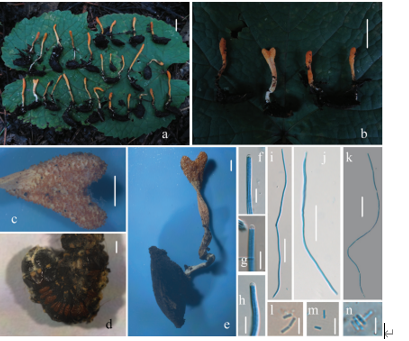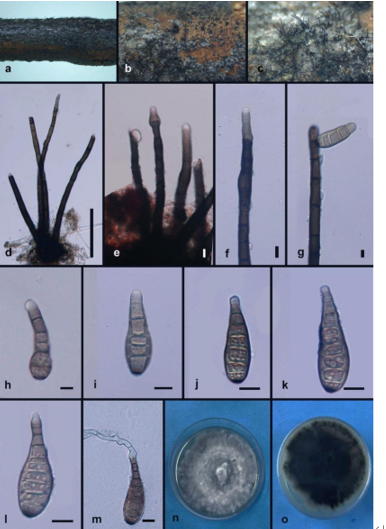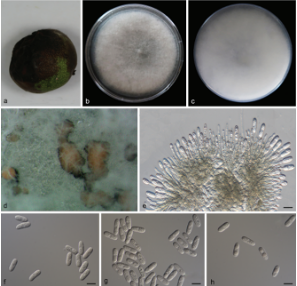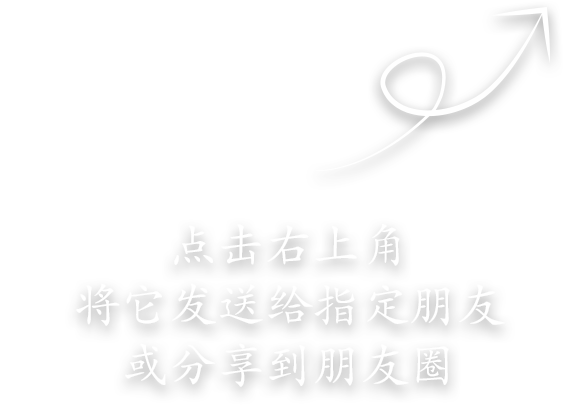Scheffersomyces paraergatensis C.Y. Chai & F.L. Hui, sp. nov. 2020
MycoBank No: 835005
Holotype: China, Henan Province, Nanyang, in rotting wood, under a mixed forest, July 2016, K.F. Liu & Z.W. Xi (ex-holotype: CICC 33165; CBS 14694).
Morphological description
The cells are ovoid to elongate (2.5–5×3.5–6 μm) and occur singly or in pairs after grown in a YM broth for 3 days at 25 °C (Fig. 3A). Budding is multilateral. After 3 days of growth on YM agar at 25 °C, the colonies are white to creamcolored, buttery, and smooth with entire margins. After 7 days at 25 °C, on a Dalmau plate culture with CM agar, pseudohyphae were observed but true hyphae were not. Conjugated asci formed after 6 days at 25 °C on CM agar and 5% ME agar, with each ascus containing one or two hat-shaped ascospores (Fig. 3B). Glucose, galactose, and d-xylose are weakly fermented, but maltose, sucrose, trehalose, melibiose, lactose, cellobiose, melezitose, raffinose, and inulin are not. Glucose, galactose, d-ribose, d-xylose, l-arabinose, d-arabinose, sucrose, maltose, trehalose, methyl α-d-glucoside, cellobiose, salicin, arbutin, lactose, raffinose, inulin, glycerol, ribitol, xylitol, d-glucitol, d-mannitol, d-glucono-1, 5-lactone, d-gluconate, succinate, citrate, and ethanol are assimilated. No growth was observed in l-sorbose, d-glucosamine, l-rhamnose, melibiose, melezitose, erythritol, galactitol, myo-inositol, 2-keto-d-gluconate, 5-ketod-gluconate, d-glucuronate, dl-lactate, or methanol. For the assimilation of nitrogen compounds, growth on l-lysine, glucosamine, and d-tryptophan is positive, while growth on nitrate, nitrite, ethylamine, cadaverine, creatine, creatinine, and imidazole is negative. Growth was observed at 30 °C, but not at 35 °C. Growth in the presence of 0.1% cycloheximide is positive, but growth in the presence of 10% NaCl with 5% glucose and 1% acetic acid is negative. Starch-like compounds are not produced. Urease activity and diazonium blue B reactions are also negative.
Habitat: in rotting wood, under a mixed forest
Distribution: China
GenBank Accession: ITS KY213803, MT133541; nrLSU D1/D2 KY213826, MT133546
Notes: Two strains formed a group related to S. ergatensis and Candida broadrunensis, which represent a new species, S. paraergatensis. The nucleotide differences between the new species and its closest relative, S. ergatensis, were 1.1% substitutions in the D1/D2 domain and 0.8% substitutions in ITS region, respectively. Similarly, S. paraergatensis and C. broadrunensis displayed 0.9% substitutions in the D1/D2 domain and 2.4% substitutions in the ITS region, respectively. Physiologically, S. paraergatensis can be differentiated from its closest relative, S. ergatensis (Lachance et al. 2011), by its ability to ferment d-xylose and assimilate l-arabinose, raffinose, inulin, and d-gluconate and its inability to assimilate l-sorbose. Additionally, S. paraergatensis can grow in 0.1% cycloheximide and at 30 °C, but not for S. ergatensis.
Reference: Jia R-R, Lv S-L, Chai C-Y et al. (2020) Three new Scheffersomyces species associated with insects and rotting wood in China.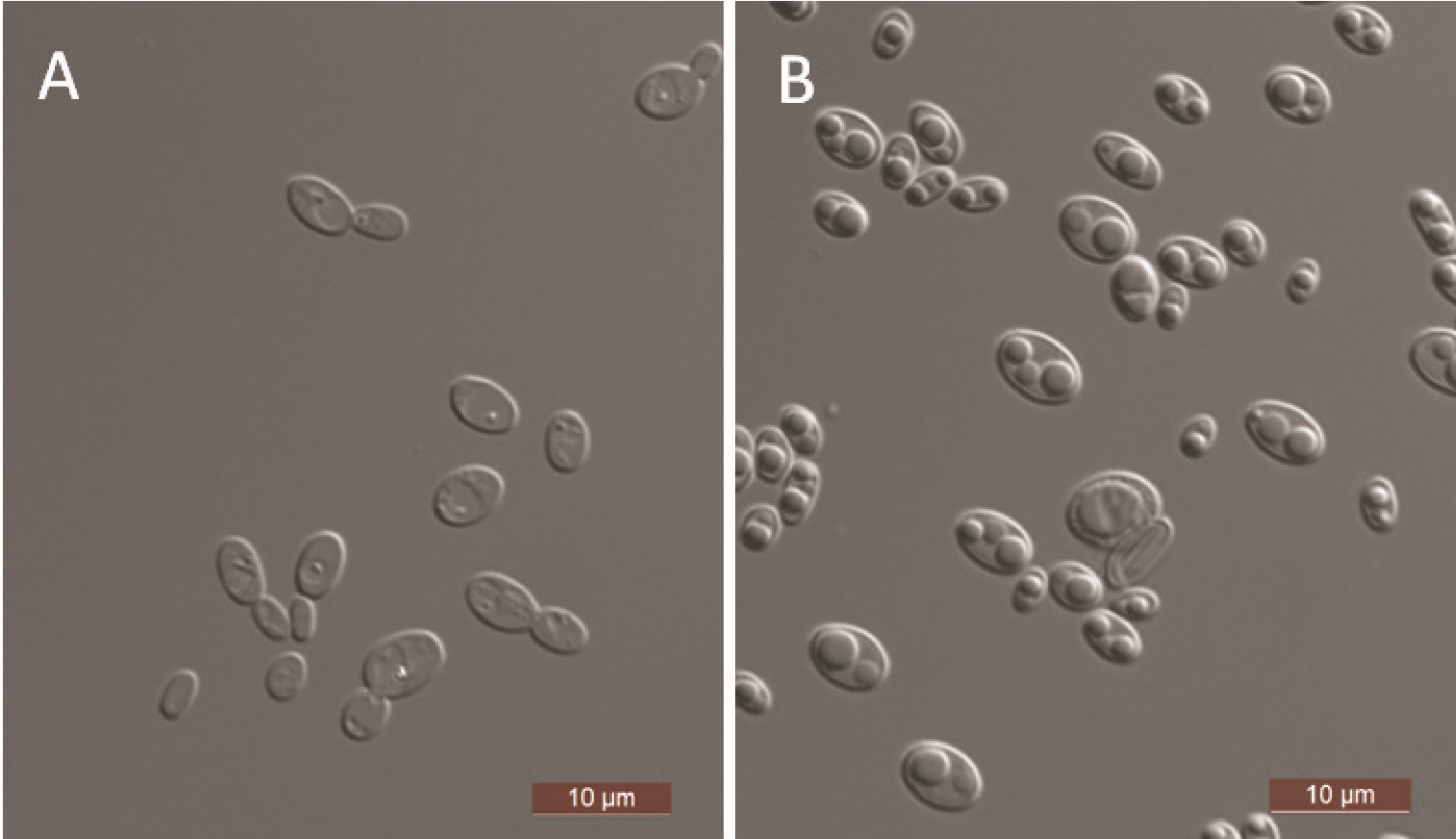
Morphology of S. paraergatensis. A budding cells B ascus and ascospores. Scale bars: 10 μm.


